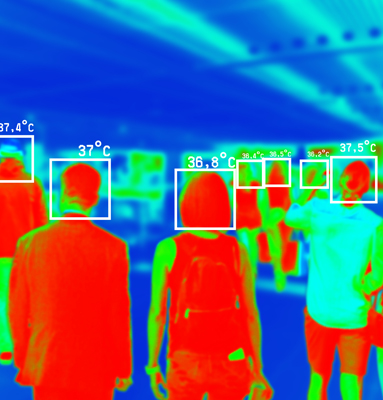
In today's fast-paced world, accurately monitoring foot traffic has become essential for businesses, transportation hubs, and public spaces. From retail stores optimizing their layouts to city planners designing smarter urban spaces, the demand for precise people counting solutions has never been higher.
Key Insight: Traditional people counting methods often fail to deliver accurate data in high-traffic environments, leading to poor decision-making and operational inefficiencies.
LiDAR (Light Detection and Ranging) technology has emerged as a game-changing solution, offering unprecedented accuracy while addressing privacy concerns that plague camera-based systems. This comprehensive guide explores why LiDAR-based people counters are revolutionizing crowd analytics across industries.
Accurate foot traffic data serves multiple critical functions:
LiDAR (Light Detection and Ranging) is a remote sensing method that uses pulsed laser light to measure distances to objects. Originally developed for atmospheric research and later adopted for topographic mapping, LiDAR has found revolutionary applications in people counting due to its precision and reliability.
The technology operates through a sophisticated three-step process:
Technical Advantage: Modern LiDAR sensors can achieve accuracy within ±5cm, even in crowded environments with multiple moving targets.
| Component | Function | Importance |
|---|---|---|
| Laser Emitter | Generates the laser pulses | Determines range and resolution |
| Receiver Sensor | Detects reflected pulses | Affects detection sensitivity |
| Data Processor | Analyzes time-of-flight data | Converts raw data into actionable information |
| AI Algorithms | Identifies and tracks human movement | Enables counting accuracy in complex scenarios |
Modern retailers face intense competition where every customer interaction counts. LiDAR people counters provide:
Case Study: A major European retailer implemented LiDAR counting across 50 stores and saw a 17% improvement in staffing efficiency during peak hours.
Airports and train stations benefit from LiDAR counting through:
Urban planners use LiDAR data to:
While widely used, video analytics face significant limitations:
These alternatives present their own challenges:
Industry Insight: A recent study found that traditional counting methods have an average error rate of 15-25% in high-traffic conditions, while LiDAR systems maintain accuracy above 95%.
While LiDAR systems require higher upfront costs than traditional solutions, they deliver substantial returns:
| Cost Factor | Traditional Systems | LiDAR Systems |
|---|---|---|
| Initial Hardware Cost | $500-$2,000 per unit | $2,000-$5,000 per unit |
| Installation Complexity | Medium | Low to Medium |
| Maintenance Requirements | High (regular cleaning, recalibration) | Low (self-cleaning options available) |
| Expected Lifespan | 3-5 years | 7-10 years |
Businesses implementing LiDAR counting report:
The next generation of LiDAR counters will:
Emerging technologies are driving:
Market Forecast: The global people counting system market is projected to grow from $1.1 billion in 2023 to $2.3 billion by 2028, with LiDAR-based solutions capturing an increasing share.
LiDAR-based people counting represents a significant leap forward in crowd analytics technology. By combining unparalleled accuracy with privacy-friendly operation, these systems are transforming how businesses and public spaces understand and optimize foot traffic.
Key takeaways:
As the technology continues to advance and costs decrease, LiDAR people counting will likely become the standard solution for any organization serious about understanding and optimizing their space utilization and customer flows.
Please share your details with us so we can best assist you.
Alternatively if you are in a rush you can find time to meet with us here

.svg)

.svg)